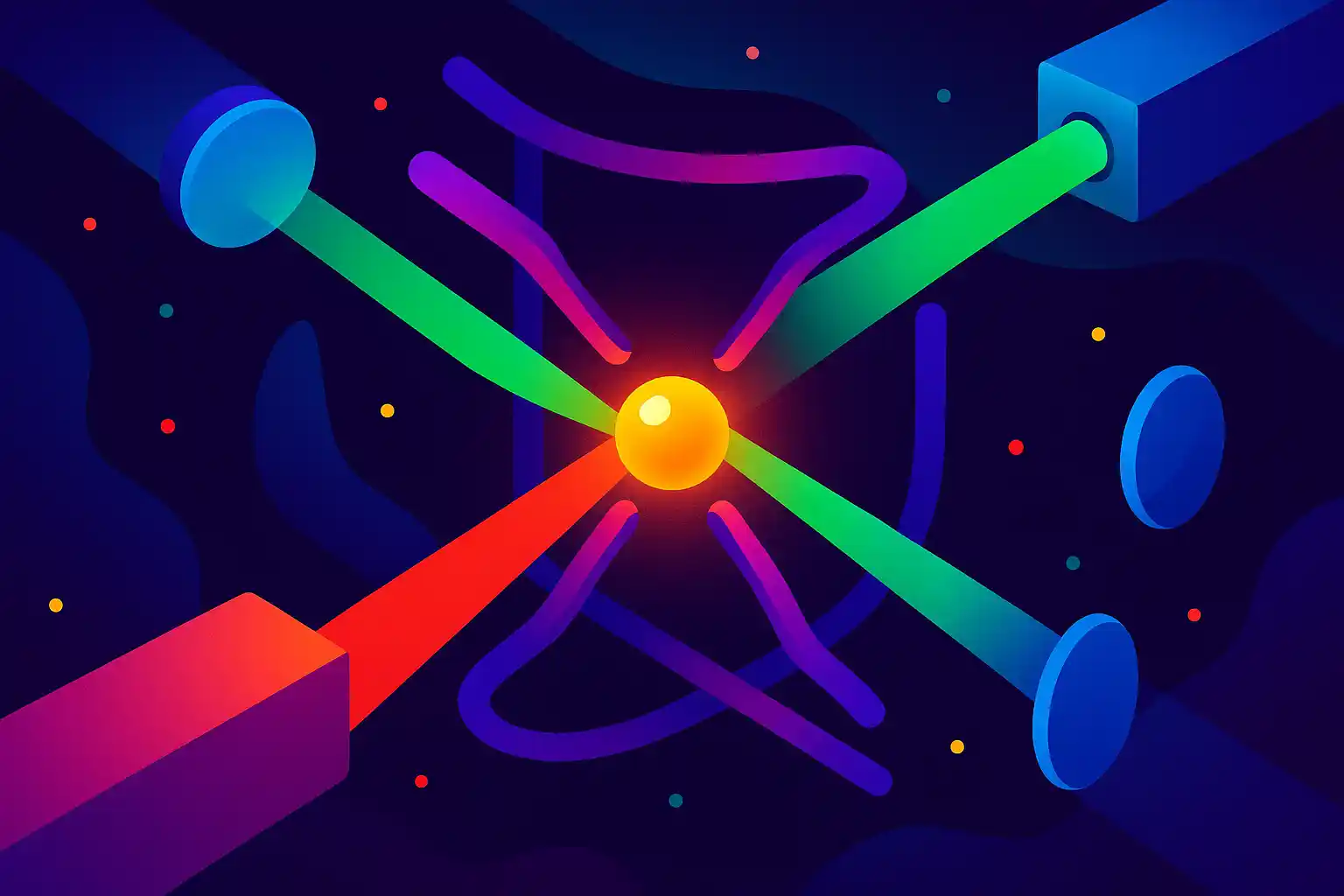Table of Contents
- Introduction
- Basics of Ion Trapping
- Paul and Penning Traps
- Linear RF Traps and Segmented Traps
- Ion Loading and Initialization
- Cooling Mechanisms Overview
- Doppler Cooling
- Sub-Doppler Techniques: Sisyphus Cooling
- Sideband Cooling
- Resolved Sideband Cooling for Ground-State Preparation
- Cooling in Multi-Ion Chains
- Laser Requirements for Ion Cooling
- Heating Mechanisms and Mitigation
- Laser Locking and Stabilization
- Sympathetic Cooling of Ions
- Ion Trap Fabrication and Design
- Micromotion Compensation Techniques
- Temperature Diagnostics and Measurement
- Applications in Quantum Computation and Metrology
- Conclusion
1. Introduction
Laser cooling and ion trapping form the technological basis of many modern quantum experiments. They allow for precise control of single particles, essential for quantum information processing, high-precision metrology, and fundamental physics.
2. Basics of Ion Trapping
Ion traps use electric and magnetic fields to confine charged particles in space. The Coulomb repulsion between ions in a trap helps create stable, ordered structures like linear chains and crystals.
3. Paul and Penning Traps
- Paul traps use time-varying (RF) and static electric fields for 3D confinement.
- Penning traps use static electric and magnetic fields. Less common in quantum computing due to complex control.
4. Linear RF Traps and Segmented Traps
Linear traps use RF potentials for radial confinement and DC fields for axial trapping. Segmented electrodes allow flexible manipulation of ion positions and are widely used in scalable architectures.
5. Ion Loading and Initialization
Ions are created by photoionizing neutral atoms from atomic beams or vapor sources. Initialization involves optical pumping to prepare ions in well-defined internal states before cooling or gate operations.
6. Cooling Mechanisms Overview
Cooling removes kinetic energy to prepare ions in well-controlled motional states. Techniques include:
- Doppler cooling
- Sideband cooling
- Sisyphus and polarization-gradient cooling
7. Doppler Cooling
A red-detuned laser beam induces scattering preferentially when ions move toward the light source, reducing kinetic energy. This brings ions near the Doppler limit, typically in the millikelvin range.
8. Sub-Doppler Techniques: Sisyphus Cooling
For some ion species, polarization gradients and multiple ground states allow further cooling beyond the Doppler limit. Though more common in neutral atoms, Sisyphus cooling can enhance ion cooling under special conditions.
9. Sideband Cooling
Used when motional sidebands are spectrally resolved. Laser drives the red sideband of a narrow transition, removing phonons and cooling the ion to its motional ground state.
10. Resolved Sideband Cooling for Ground-State Preparation
This method enables high-fidelity quantum gate operations by preparing ions in the lowest vibrational state. Essential for entangling gates using shared motional modes.
11. Cooling in Multi-Ion Chains
Longer chains have multiple motional modes. Cooling all relevant axial and radial modes ensures collective coherence and minimizes cross-talk in quantum operations.
12. Laser Requirements for Ion Cooling
Key laser properties:
- Narrow linewidths (~kHz or less)
- High power stability
- Tight beam focus (~10 µm)
- Frequency tunability and sideband access
13. Heating Mechanisms and Mitigation
Sources include:
- Electrical noise on trap electrodes
- Background gas collisions
- Anomalous heating from surface effects
Strategies: cryogenic traps, surface cleaning, low-noise electronics
14. Laser Locking and Stabilization
Lasers are stabilized using reference cavities or atomic/molecular transitions. Pound-Drever-Hall (PDH) locking is commonly used to reduce frequency drift and linewidth.
15. Sympathetic Cooling of Ions
Used when the target ion lacks suitable transitions for laser cooling. A second ion species (coolant ion) is trapped alongside and cooled, transferring energy via Coulomb interaction.
16. Ion Trap Fabrication and Design
Microfabricated surface-electrode traps use photolithography and cleanroom processing. 3D traps involve machined or laser-cut metal electrodes, offering better depth and stability.
17. Micromotion Compensation Techniques
Excess micromotion occurs when ions are displaced from RF null. Compensation uses DC electrode tuning and observation of fluorescence modulation to minimize micromotion and associated heating.
18. Temperature Diagnostics and Measurement
Techniques include:
- Sideband spectroscopy
- Fluorescence correlation
- Time-of-flight analysis
These allow estimation of vibrational quantum numbers and motional energy.
19. Applications in Quantum Computation and Metrology
Laser-cooled trapped ions enable:
- Quantum logic gates
- Frequency standards and atomic clocks
- Quantum simulations of many-body systems
- Tests of fundamental symmetries and constants
20. Conclusion
Laser cooling and ion trapping provide unparalleled control over quantum systems. They remain essential to progress in scalable quantum computing, precision measurement, and the fundamental understanding of atomic-scale physics.


